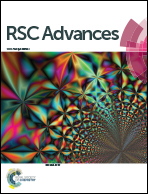Improving photocatalytic properties of SrTiO3 through (Sb, N) codoping: a hybrid density functional study
Abstract
A systematic study using hybrid density functional theory has been carried out to investigate the synergistic effect of Sb and N doping on the photocatalytic properties of SrTiO3 under visible light. The calculated band gap (3.19 eV) for SrTiO3 with the Heyd, Scuseria, and Ernzerhof hybrid functional is found to be very close to the experimentally observed value of 3.2 eV. Although doping with N is able to enhance the visible light activity by reducing the effective band gap to 2.31 eV, the localized occupied and unoccupied states in the forbidden region may affect the photocatalytic activity. However, the presence of Sb not only passivates those unoccupied states completely, but also shifts the localized occupied states near the valence band to form a continuum band structure. The introduction of N into the SrTiO3 crystal structure is favored by the presence of Sb. In the codoped system charge compensation is established, thereby unwanted vacancy formation will be minimized. The absorption curve for the (Sb, N)-codoped SrTiO3 is found to shift towards the visible region due to reduction in band gap to 2.66 eV. Moreover, the band alignment shows that the (Sb, N)-codoping makes SrTiO3 thermodynamically more suitable for hydrogen production as compared to the undoped system. Based on the present study, we can propose (Sb, N)-codoping as one of the effective approaches to improve the photocatalytic activity of SrTiO3 for water splitting under visible light irradiation.


 Please wait while we load your content...
Please wait while we load your content...